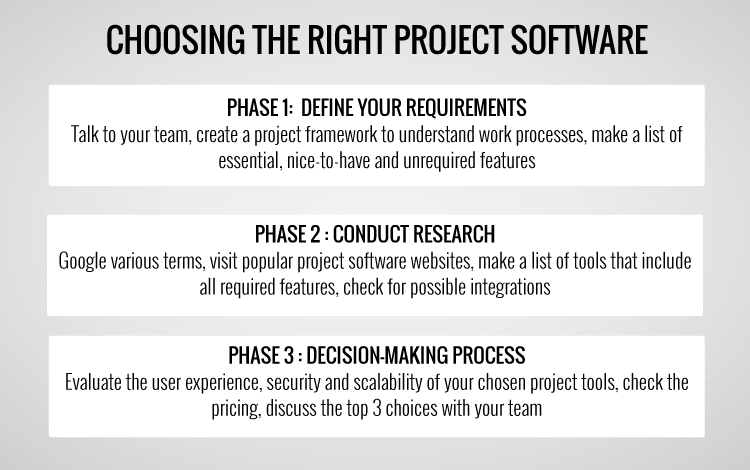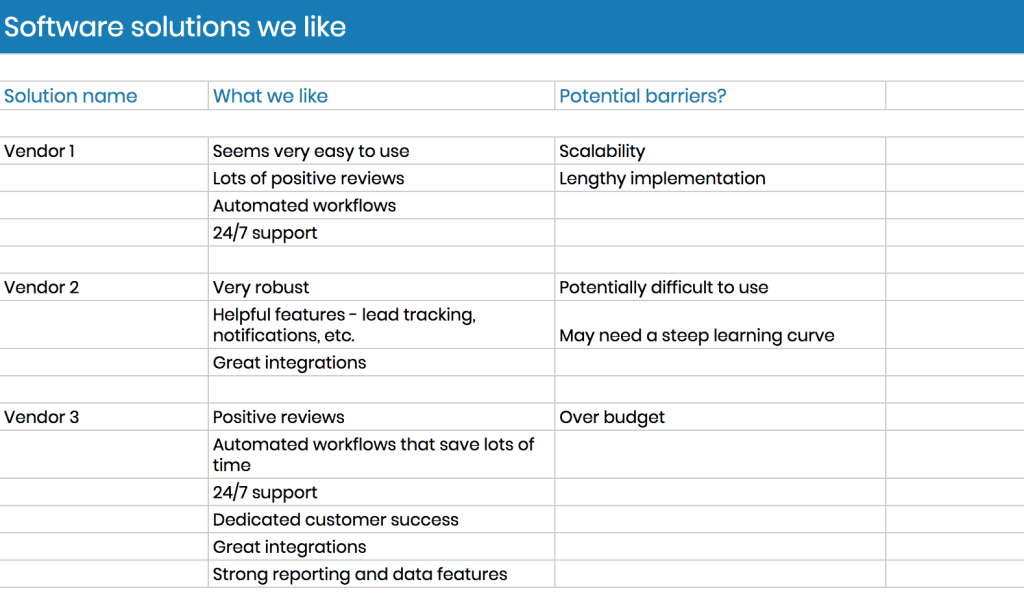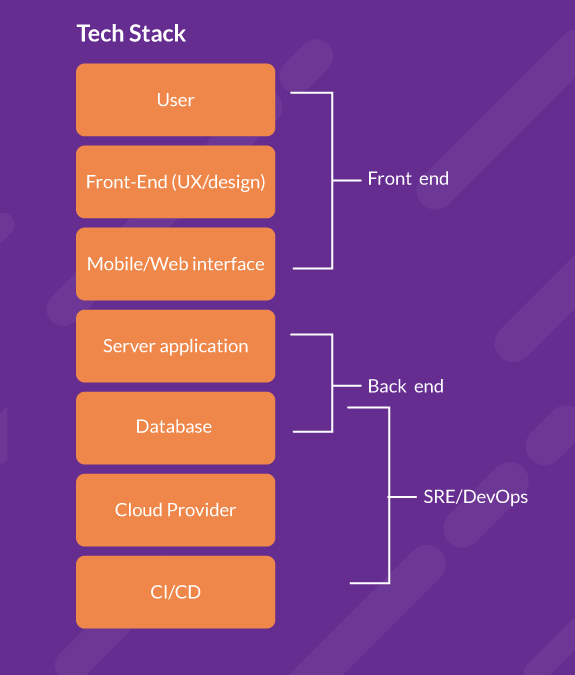So, you’re in the market for a software tool, but you’re not entirely sure where to start. With so many options out there, it can be overwhelming trying to find the perfect fit for your needs. Whether you’re a small business owner, a freelancer, or simply someone looking to streamline their workflow, choosing the right software tool is essential. In this article, we’ll explore some key factors to consider when making your decision, helping you navigate through the sea of options so that you can find the perfect software tool for you.
This image is property of images.ctfassets.net.
Understanding Your Needs
Choosing the right software tool for your needs requires a thorough understanding of your goals, objectives, budget, and resources. By following a systematic approach, you can ensure that the software tool you select aligns perfectly with your requirements.
Identify Your Goals and Objectives
Before embarking on your search for a software tool, it is essential to clearly identify your goals and objectives. What specific tasks or problems are you looking to address with this software? Are you aiming to increase productivity, improve communication, or streamline processes? By clearly defining your goals, you can narrow down your options and find a tool that caters precisely to your needs.
Assess Your Budget and Resources
Another crucial consideration when choosing a software tool is your budget and available resources. How much are you willing to invest in a software solution? It’s important to strike a balance between cost and functionality. Consider not only the initial purchase price but also factors like maintenance costs, upgrades, and ongoing support. Additionally, evaluate the resources you have in terms of technical expertise and infrastructure to ensure compatibility with the chosen software tool.
Consider the Scalability Requirements
When choosing a software tool, it’s essential to consider the scalability requirements of your organization. Will the tool be able to accommodate your future growth? Assess whether the software can handle increasing data volumes, user additions, or additional features. Choosing a scalable solution will save you the hassle of having to switch tools as your needs evolve.
Determining Technical Requirements
Understanding your technical requirements is vital to choosing the right software tool that seamlessly integrates into your existing systems. Consider the following aspects to guide your decision-making process.
Define Your Preferred Operating System
One of the initial steps in determining technical requirements is to define your preferred operating system (OS). The chosen software must be compatible with your existing OS or the one you intend to use. Whether you prefer Windows, macOS, Linux, or a mobile OS, make sure that the software is supported on your chosen platform.
Analyze Hardware and Software Compatibility
Ensure that the software tool you choose is compatible with your existing hardware and software infrastructure. Check the system requirements of the software and cross-reference them with your organization’s hardware specifications. It’s crucial to ensure that your hardware can handle the software’s resource requirements without any performance issues.
Consider Integration with Existing Systems
To avoid any disruption to your workflows, consider how well the software tool integrates with your existing systems. Determine whether the software has the capability to integrate with your customer relationship management (CRM) software, enterprise resource planning (ERP) system, or any other critical applications. Seamless integration will ensure smooth data transfer and a more efficient overall process.

This image is property of www.scoro.com.
Researching Available Options
With a clear understanding of your needs and technical requirements, it’s time to research the available options in the market. This will involve exploring established software providers, reading reviews and ratings, and considering open-source solutions.
Search for Established Software Providers
Begin your research by looking for established software providers in your industry. These providers often have a proven track record and are more likely to offer reliable solutions. Check their websites and see if they cater to organizations similar to yours. Take note of their offerings and evaluate their reputation based on customer reviews and industry recognition.
Read Reviews and Ratings
To gain insights into the user experience and product quality, read reviews and ratings of the software tools you are considering. Websites like G2, Capterra, and TrustRadius provide unbiased reviews from real users. Pay attention to both positive and negative feedback to get a well-rounded view of the software’s strengths and weaknesses. This will help you make a more informed decision.
Explore Open Source Solutions
Open-source software solutions can be a cost-effective alternative, especially for organizations with budget constraints. Explore the open-source options available in the market and evaluate their offerings based on your requirements. Keep in mind that while open-source solutions are often free, they may require technical expertise for installation, customization, and ongoing maintenance.
Evaluating Features and Functionality
When choosing a software tool, it’s essential to evaluate its features and functionality to determine if it aligns with your requirements. Consider the following factors to make an informed decision.
Make a List of Must-Have Features
Make a list of features that are essential for your organization. These can include specific functionality, integrations with other tools, reporting capabilities, or even user permissions. Prioritize these features and ensure that the software tool offers them. Having a clear understanding of must-have features will help you filter out options that do not meet your requirements.
Consider User-Friendliness and Ease of Use
The user-friendliness and ease of use of a software tool are crucial to ensure smooth adoption and minimal training requirements. Consider whether the interface is intuitive, if it requires extensive training, and if it aligns with the technical proficiency of your users. A tool that is easy to navigate and understand will result in higher user acceptance and overall productivity.
Evaluate Customization and Flexibility
Every organization has specific needs, and a software tool should offer customization options to meet these unique requirements. Evaluate the flexibility of the tool in terms of customization. Can you tailor it to fit your organization’s workflows and processes? Look for features like configurable workflows, customizable fields, and the ability to create custom reports. Customization capabilities will allow the software to grow and adapt alongside your organization.

This image is property of b2662075.smushcdn.com.
Considering Support and Training
Once you have shortlisted potential software tools based on their features and functionality, it’s important to consider the support and training options available. Here’s what you should keep in mind.
Assess Available Technical Support
Technical support is an essential aspect of any software tool. Consider the level of technical support offered by the software vendor. Are they responsive? Do they provide different support channels like email, phone, or live chat? Look for vendors with good customer support reviews to ensure you have assistance when you encounter any issues or need guidance.
Explore Training Resources
Evaluate the training resources provided by the software vendor. Do they offer comprehensive documentation, video tutorials, or knowledge bases? Look for tools that provide robust training materials to empower your users and help them quickly adapt to the new software. Additionally, inquire about the availability of on-site or virtual training sessions tailored to your organization’s needs.
Consider Community and User Forums
Community and user forums can be valuable resources for troubleshooting, sharing best practices, and gaining insights from other users. Check if the software vendor has an active community where users can ask questions and exchange ideas. User forums allow you to tap into a network of experienced users who can provide assistance, advice, and recommendations.
Analyzing Total Cost of Ownership
When choosing a software tool, it’s crucial to examine the total cost of ownership (TCO). This involves considering not only the upfront purchase price but also long-term expenses. Here’s what you should analyze.
Compare Licensing and Pricing Models
Different vendors offer various licensing and pricing models. Analyze these models to understand the short and long-term costs associated with the software tool. Some common licensing models include one-time purchases, subscriptions, or per-user licenses. Ensure you have a clear understanding of the costs involved, including any additional fees for upgrades, maintenance, or technical support.
Factor in Maintenance and Upgrades
Consider the maintenance and upgrade costs associated with the software tool. Are there regular updates that require additional fees or are they included in the license? Assess whether the vendor provides regular patches, bug fixes, and security updates. Choosing a tool that offers regular updates ensures that you have access to the latest features and safeguards your system against potential vulnerabilities.
Estimate Implementation Costs
Implementation costs include any expenses incurred during the deployment of the software tool. This can include data migration, training, and customization. Request detailed implementation plans and cost estimates from the software vendors you are considering. Carefully evaluate these estimates and weigh them against your budget and available resources. Choosing a tool that fits within your implementation budget will set you up for success.

This image is property of wcs.smartdraw.com.
Requesting Demos and Trials
To ensure that a software tool meets your requirements, it’s essential to request demos and trials from the vendors. This allows you to have a hands-on experience and evaluate the software’s fit for your organization. Follow these steps for an effective evaluation.
Contact Software Vendors for Demos
Reach out to the software vendors and request demos of their products. Prepare a list of specific features or scenarios you would like to see during the demo. Focus on areas that align with your organization’s needs and prioritize your must-have features. Demos provide an opportunity to ask questions, interact with the software, and get a feel for its user experience.
Request Free Trials and Test Periods
Many software vendors offer free trials or test periods allowing you to evaluate the software in your own environment. Take advantage of these trials and thoroughly test the software to gain insights into its functionality, performance, and user experience. Use real-world scenarios to simulate everyday operations and determine if the software meets your expectations.
Engage in Hands-On Evaluation
During the demo and trial phases, encourage your team members to actively participate in evaluating the software tool. Gather their feedback, concerns, and observations. Engage in discussions to understand their perspectives and to ensure that the software meets the requirements and preferences of different stakeholders. Consolidate the feedback and take it into account when making the final decision.
Seeking Recommendations and Feedback
In addition to your own evaluation, seeking recommendations and feedback from others can provide valuable insights and perspectives. Here are some strategies to gather recommendations and feedback.
Consult Peers and Professionals
Reach out to peers and professionals in your industry who have experience with similar software tools. Seek their recommendations and ask for their insights on usability, reliability, and vendor support. Their experiences can help you make a more informed decision and steer you towards software tools that have been tried and tested in your industry.
Join Industry-Specific Communities
Joining industry-specific communities and forums can connect you with professionals who have firsthand experience with different software tools. Participate in discussions, ask questions, and share your requirements. Engaging with the community allows you to tap into a collective knowledge base and gain unbiased recommendations based on real-world usage.
Solicit Feedback from Users
If possible, reach out to customers who are already using the software tools you are considering. Inquire about their experiences with the software, its effectiveness, and any challenges they may have faced. Getting feedback from actual users will provide you with valuable insights that go beyond what a vendor might share in their marketing materials.

This image is property of blog.ubiminds.com.
Considering Security and Data Privacy
Ensuring the security and privacy of your data is of paramount importance when selecting a software tool. Consider these aspects to make an informed decision:
Ensure Compliance with Legal and Industry Standards
Check if the software tool complies with legal and industry standards relevant to your organization. Depending on your industry, you may have specific compliance requirements such as General Data Protection Regulation (GDPR) or Health Insurance Portability and Accountability Act (HIPAA). Understand how the vendor ensures compliance and protects your data to mitigate potential risks.
Evaluate Encryption and Data Protection Measures
Evaluate the encryption and data protection measures employed by the software tool. Check if it provides features like secure transmissions, role-based access controls, and data encryption at rest. Robust security measures ensure that your sensitive data remains protected, reducing the risk of unauthorized access or data breaches.
Analyze Data Backup and Recovery Options
Data loss can have severe consequences for any organization. Assess the software tool’s data backup and recovery options. Does it offer automatic backups? Are there options for data replication or restoration? Understanding the backup and recovery mechanisms will help you safeguard your data and ensure business continuity in the event of any unforeseen incidents.
Making a Final Decision
After thorough evaluation and consideration of all the above factors, it’s time to make a final decision. Take the following steps to make an informed choice.
Compare Pro and Cons of Shortlisted Options
Compare the pros and cons of the software tools that have made it to your shortlist. Consider how well each tool meets your requirements, aligns with your budget, and fits within your technical infrastructure. Evaluate the trade-offs and prioritization of features to identify the tool that offers the best overall value for your organization.
Consult with Stakeholders and Decision-Makers
Consult with key stakeholders and decision-makers in your organization before finalizing your choice. Share the pros and cons of the shortlisted options, along with feedback gathered from demos, trials, and user consultations. Engage in discussions to ensure alignment with the organization’s overall strategy and goals.
Consider Long-Term Viability and Vendor Reputation
Assess the long-term viability and reputation of the software vendor. Evaluate factors like their financial stability, company history, and customer satisfaction. A vendor with a proven track record, a reliable customer base, and a robust support system is likely to be a more trustworthy partner in the long run.
By following these steps and considering each aspect carefully, you can choose a software tool that aligns perfectly with your organization’s needs. Remember to revisit your goals and objectives periodically to ensure that the chosen software tool continues to drive efficiency and productivity in your organization.

